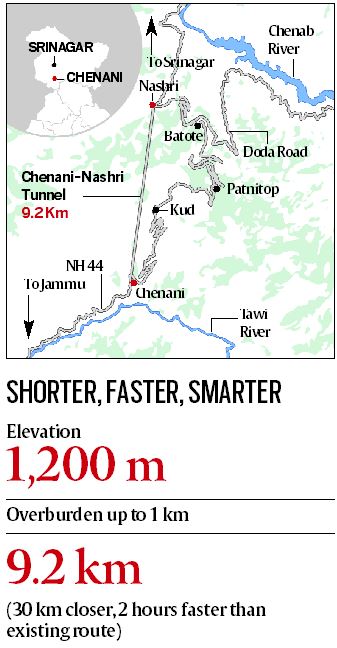900 319 0030
enquiry@shankarias.in
Why in news?
Chenani Nashri tunnel is recently opened and it provides a safer, shorter route to the valley crossing through the heart of Himalayas.
What is about the tunnel?

What are the key tunnels in Jammu and Kashmir?
What are the other important rail links?
Source: Indian Express